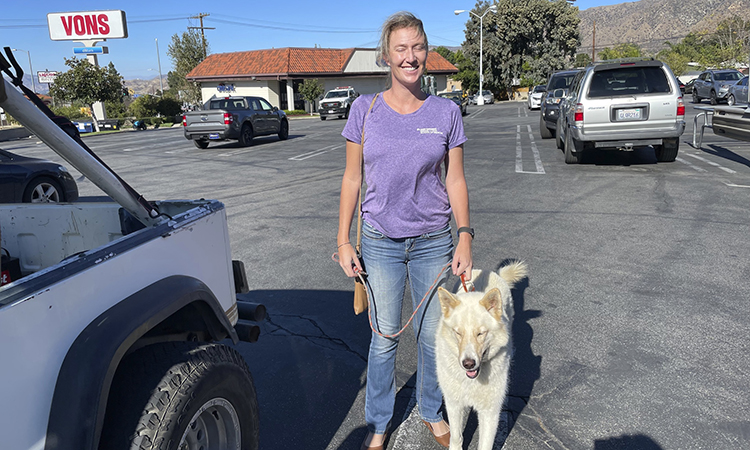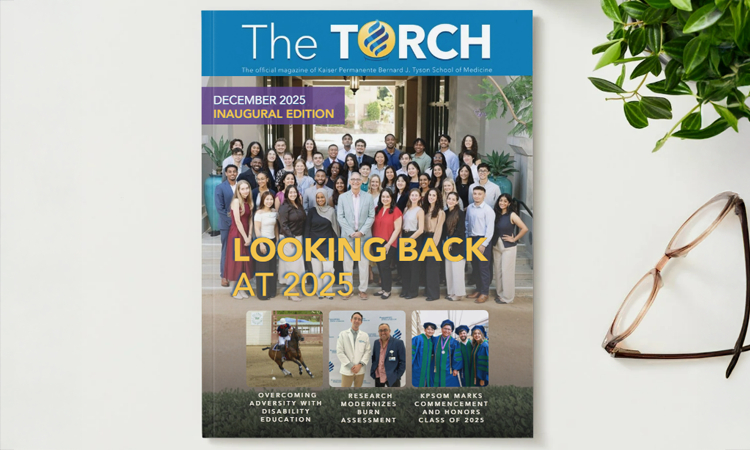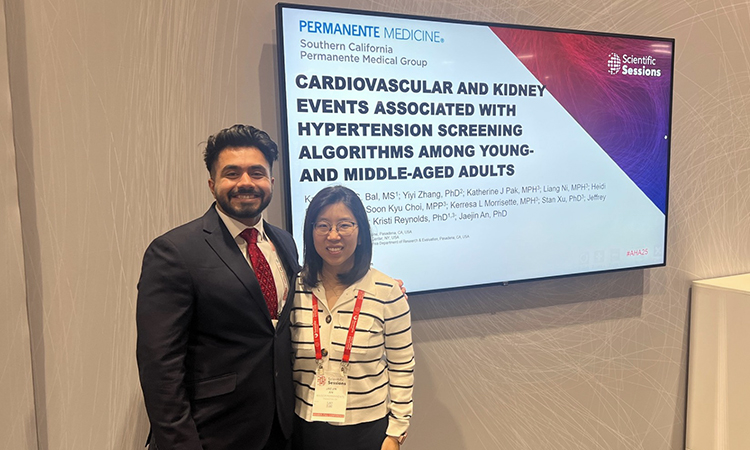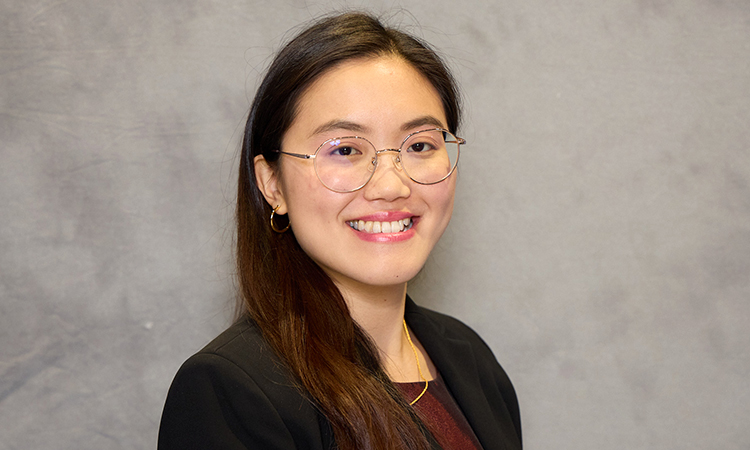Disability Awareness and Education for Budding Physicians
Over time, Dr. Ludwig has made use of numerous mobility aids, including a wheelchair, tall walker, and walker. With marked improvement since her accident due to rehabilitation and treatment, she is currently designated a C3 Asia D on the ASIA Impairment Scale, which means more than 50 percent of her muscles are more than grade 3 and she has the ability to raise both her arms and legs. Dr. Ludwig uses an ankle-foot orthotic to address foot drop and spasticity in her right leg and uses walking sticks when tired or navigating rough terrain. She uses a mobility scooter when a high level of walking is required, such as a day at an amusement park, and is generally assisted by Riley, her brace/mobility service dog.
Understanding that approximately six to seven percent of the U.S. population uses a mobility device such as a wheelchair, cane, crutches, or a walker, Dr. Ludwig sought to help KPSOM students become more familiar working with disabled patients — particularly those using mobility devices. She’d noticed that few students interacted with patients from this population and began introducing ways to close this gap.
“I have become motivated to improve medical education, both to make medical education more accessible to people with disabilities, as well as train medical students and physicians on how to work with [disabled] patients,” said Dr. Ludwig.
School administrators have been largely receptive to many of her ideas to help promote disability awareness for students and patients. As an example, Dr. Ludwig and her colleagues incorporated many of her ideas into a mind and nervous system unit for first-year students, and she created a pre-work video on the use of mobility aids that highlights her personal injury, recovery journey, and her use of mobility aids and their benefits.
In addition, she allows her students to practice a neurological exam on her during a doctoring session to learn about the Babinski reflex (a neurological test where the sole of the foot is stimulated and the response of the toes is observed) and spasticity (a disruption in muscle movement patterns that causes certain muscles to contract all at once when trying to move or even at rest). During the session, students are taught to observe not only Dr. Ludwig’s reflexes and spasticity, but also her gate and proprioception (the body's ability to sense its own position and movement in space).
Dr. Ludwig said KPSOM is poised to become a national leader in disability rights by making education accessible to students with disabilities, especially in a time when the Association of American Medical Colleges is encouraging medical schools to be more inclusive of students with disabilities, according to news reports, because some schools are rescinding acceptances after realizing the applicant is disabled. She envisions KPSOM as an institution not only renowned for accommodating students with disabilities but also training and preparing physicians who are better equipped to work with patients with disabilities, particularly since research shows that a staggering number of physicians lack understanding in how to work with and accommodate patients with disabilities. In addition, Dr. Ludwig explained that many physicians lack understanding of what they are legally required to provide disabled patients. “Considering that people with disabilities are the largest underrepresented minority in the country … when you factor in intersectionality, it's something that, in my opinion, has been [overlooked], and I think this school is very nicely put in a position to be able to fill a major void,” said Dr. Ludwig.
KPSOM and Disability Accommodation
With student education as a core focus, Dr. Ludwig acknowledged that it has been incredibly beneficial to dedicate her time and energy to something beyond herself and her recovery. She said the support of her colleagues has been overwhelming and many throughout the school community were eager to provide whatever accommodation she needed for work from her beginnings at KPSOM. Initially she wasn’t sure what to request as she was still adjusting to her new identity as a disabled person. Now, four years into her role, she finally requested a talk-to-text software, which was rapidly approved. In addition, the school accommodates her schedule so she’s able to attend a weekly support group that meets at 3 p.m.
“The school has been incredibly giving in terms of any accommodations that I require — anything that I need,” said Dr. Ludwig. “I think about if I had gone to a different school and done undergraduate or community college ... there is no way I could have done this position at almost any other institution in the world, as far as I am concerned. KPSOM really is the best place for me professionally.”
Advocacy Efforts and Influence
As part of Dr. Ludwig’s disability advocacy work, she co-authored “Evaluating Disability-Inclusive Content on U.S. Medical Schools’ Websites: A National Study.” The Academic Medicine article, which explores disability criteria for prospective medical school students, was published June 23, 2025. In addition, Dr. Ludwig is training to become an ambassador for the Triumph Foundation, which helps people triumph over paralysis due to spinal cord injury, multiple sclerosis, stroke, and other medical conditions. She also works diligently to help many patients within the spinal cord injury community better understand medicine and how to access the care they need.
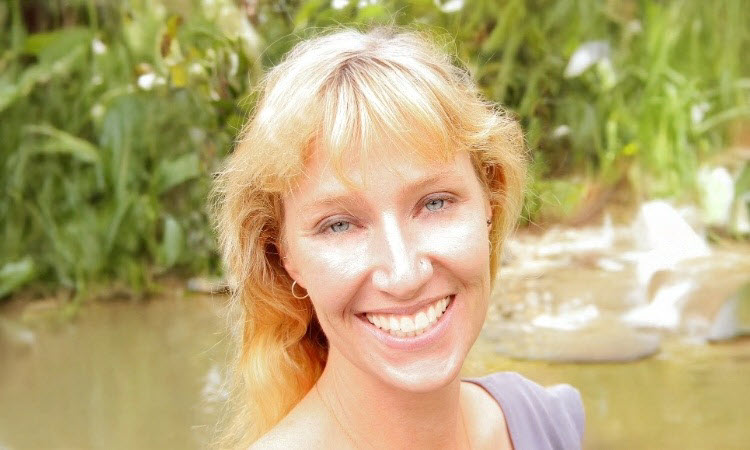
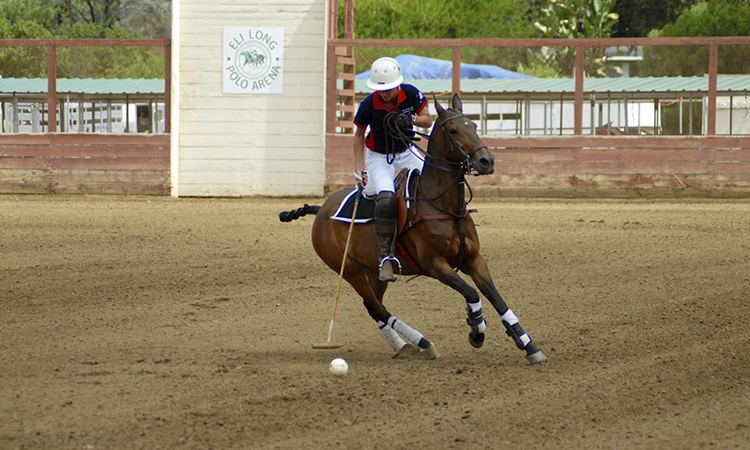
![[Left] Paramedics aid Dr. Ludwig immediately following the polo accident that led to her spinal cord injury. [Right] KPSOM Faculty Member Dr. Kirsten Ludwig lies in a hospital bed following her polo accident.](/content/dam/kp/som/homepage/news/2%20750x450%20copy,%20duo.jpg)
![[Left] Dr. Ludwig uses her mobility aids at the California Rehabilitation Institute to progress from a wheelchair to a walker to standing over time. [Right] Dr. Ludwig stands next to her physical therapist at the California Rehabilitation Institute after advancing from a wheelchair to standing following her spinal cord injury.](/content/dam/kp/som/homepage/news/1%20750x450%20copy,%20duo.jpg)
